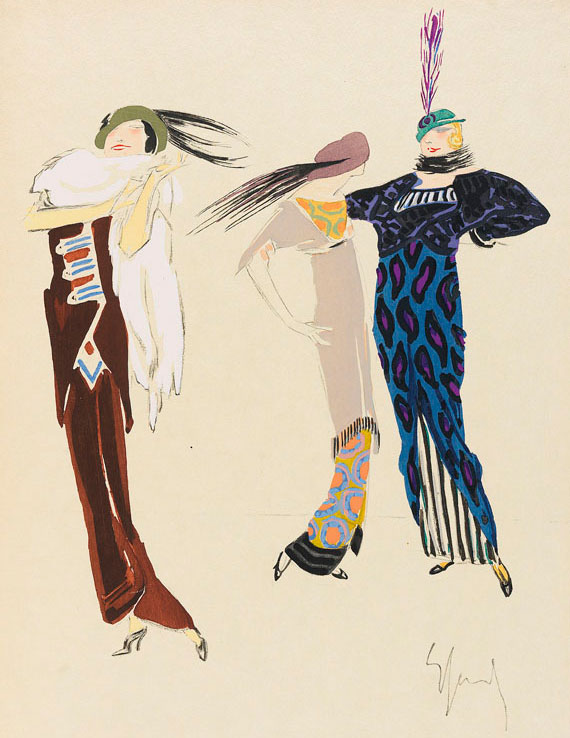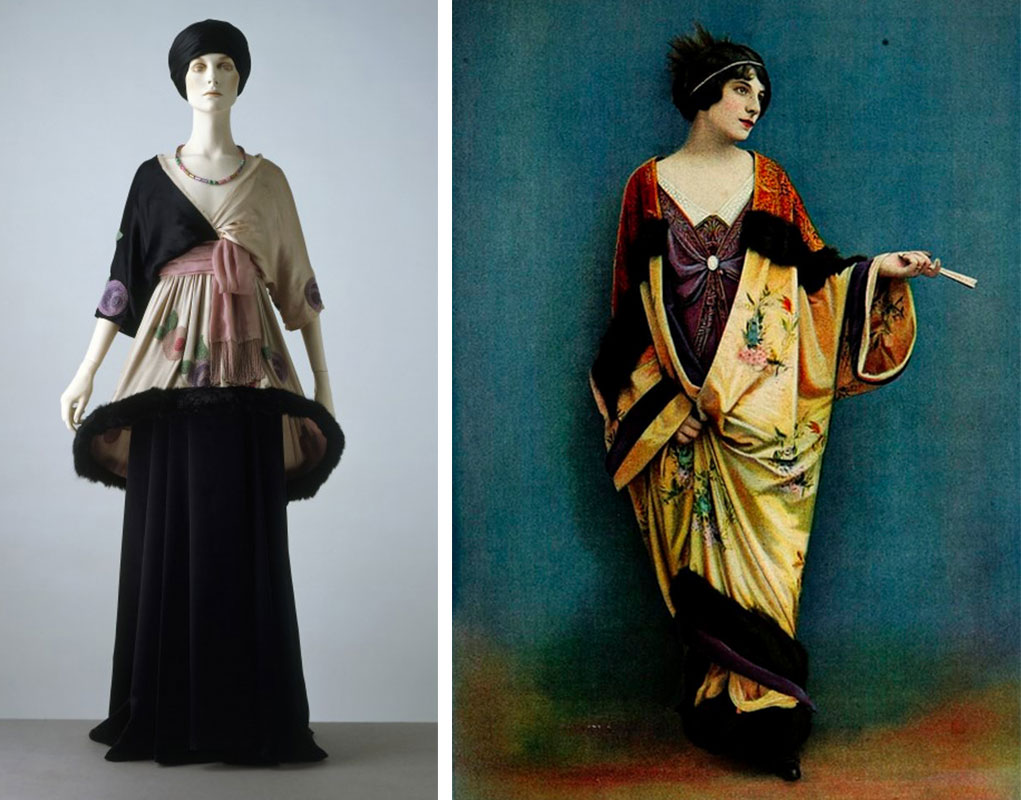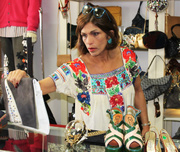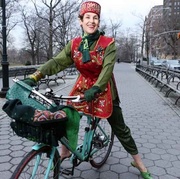
Now that the jeans-and-T-shirts plague has reached our fancy restaurants, cocktail parties, and nightclubs, it seems as though nobody cares about dressing up anymore. And yet, as fashions become increasingly casual, the perfect party dress is like a secret weapon—turning anyone into a rose among daisies.
“Most middle-class women would have had one good dress to wear for evening, parties, weddings, or other formal occasions.”
Since vintage is in vogue, you can find chic, well-made frocks, and afford them, too. Vintage isn’t just for commoners, either: Retro looks are regularly featured on the red carpet, with celebrities plucking gowns from past designer collections or straight from the racks of vintage stores. But with so many classic dresses to choose from, what are the most stunning, decade-defining looks?
It’s a perfect question for Jacqueline WayneGuite, a writer, researcher, and fashion archivist who’s worked with institutions across the U.S. and currently manages the garment collection at Columbia College Chicago. In 2012, WayneGuite also launched her blog, The Hourglass Files, to catalog her favorite styles, designers, exhibitions, and other forgotten tidbits of couturiers past. “I really value accessibility,” says WayneGuite, “and making fashion history available to everyone. In my job I get to share it with students, but on the blog, it’s for the general public. People connect with fashion history because clothes are very tangible—everyone wears them. But there’s not a lot of reputable information out there.”
Just in time for the Oscars, WayneGuite helped us compile a gorgeous, decade-by-decade guide to the best party dresses of the 20th century, looks as show-stopping today as when they first hit the scene.

Top: 1950s cocktail attire, featuring the hourglass-dress shape. Above: Esther Walls (center) hosts an informal party at her New York apartment in the 1960s. Via uiowa.edu.
Collectors Weekly: Is the special-occasion dress a modern invention?
Jacqueline WayneGuite: I think the modern idea of a party dress for the middle class really came into fashion in the 1910s or ’20s. The way I define a party dress is not necessarily just evening attire—it’s for a social gathering of generally close family or friends. It’s not super formal or super casual. So while party dresses are evening attire, not all evening attire is made up of party dresses.
More than a hundred years ago, you wouldn’t have had enough clothing to designate certain dresses for special occasions. But moving into the 1910s and ’20s, we started to see major upward mobility. The economy was great, so middle-class women could consume. Fashion production became easier and cheaper, with more ready-made clothing. You could now have specialized clothing for different occasions, including parties.

A drawing from illustrator Enrico Sacchetti’s 1913 book “Robes et Femmes” (“Dresses and Women”), showing variations of the popular tunic and hobble skirt combination.
Collectors Weekly: How do modern-made party dresses differ from vintage styles?
WayneGuite: People like to say you can wear anything from any era nowadays, but that’s not totally correct. Sure, with movies like “The Great Gatsby,” looks from the ’20s are really popular, and in the bridal industry, you see a lot of 1930s influence. But when you’re living in the moment, it’s harder to synthesize what represents our current period and what doesn’t.
“They didn’t want to look super feminine; they wanted to look streamlined.”
Not only are the rhinestones and fabrics cheaper today, but the literal foundation of the garment is of much lower quality. Unless you’re buying expensive formalwear, you don’t see corsetry built into a dress anymore. The collection I currently work with has some cheap 1950s dresses, things you would’ve bought at an inexpensive department store, but they all have built-in boning, because there was still this notion that the foundation had to be good.

Socialite Betsy von Furstenberg and friends getting dressed in a “Look” magazine article from 1950. When the strapless dress first became popular, its structural foundation was much stronger compared to modern dresses of stretch fabric. Via shorpy.com.
Nowadays, designers make up a lot through stretch fabrics, instead of better tailoring or putting in boning or a petersham, which was like a waistband that was put inside a dress to attach the bodice to your waist. Most strapless dresses in the 1950s were boned and had petershams, meaning they weren’t being held up at the bust—it was the woman’s waist and her hips that held up the dress. Your foundation would be much lower, and there was no need to hike up the dress.
I think that’s the bane of every wedding photographer’s existence: You have these beautiful dresses that the bride and bridesmaids are constantly hiking up because they’re attached with cheap stretch fabric, so they keep falling off. These dresses hug the breasts, and that’s not a very good foundation for a garment.
The party dress is definitely more casual now, and there’s a much wider variety of silhouettes and styles. One-hundred years ago, if you were wealthy enough to have a party dress, you didn’t own a huge variety. Most middle-class women would have had one good dress to wear for evening, parties, weddings, or other formal occasions. You didn’t have dresses for different occasions, because it didn’t matter if you wore the same dress: You didn’t have as many parties to go to, and unless you were super rich, you weren’t going to be photographed and have your pictures spread around, so people wouldn’t even know you wore the same dress repeatedly. It’s not a big deal when only the people at that event see your dress.
1910s
The Look: New Bohemians in Eastern-influenced tunics
Style Icons: Lillian Gish, Mary Pickford

Silent-film star Lillian Gish wears a robe with kimono-style sleeves, as captured by Edward Steichen in 1927.
Collectors Weekly: Why were Eastern-influenced prints and fabrics so trendy during the 1910s?
WayneGuite: When Japan opened up to Western trade in 1850, you had this steadily increasing amount of Japanese and Eastern influence in all areas of art and design. The Impressionist painters were inspired by Eastern asymmetry. You also saw it in furniture design, and then it made its way into fashion. Paul Poiret, who was a very high-end designer working in France in the 1910s, heavily incorporated Eastern embellishment, prints, and design aesthetics into his fashion, but there were other designers doing it at the time, too.

Left, Poiret’s famous lampshade dress circa 1912. Via the vam.ac.uk. Right, an Asian-inspired robe is worn over a slimmer skirt in this outfit by Madeleine Laferriere from 1912. Via .pintuck on flickr.
This all has a trickle-down effect. It’s not that the middle-class woman in America was buying Poiret. But she’s seeing those looks in magazines, and then copying them herself. Styles from different Eastern countries were often melded into one garment. We have a robe in the Columbia collection that has Japanese kimono-style sleeves, Chinese-style metallic embroidery, and colors that look Indian-influenced. There wasn’t a whole lot of purity in fashion—it was an amalgamation of all these cultures rolled into one garment.

Left, models wearing dresses and sheer tunic coverings by the London-based designer Lucile. Via .pintuck on flickr. Right, a spectacular purple Lucile gown from 1911.
A popular party dress style was a looser tunic worn over a slimmer dress underneath, with a different kind of silhouette than we’re familiar with. Some were less shapely and more sack-like, and then others had a lampshade look with a hoop around the hip area. They generally went just past the hip, or fell somewhere between the knee and hip, and flared out around the hoop. The lampshade silhouette was pretty avant-garde. When I worked with the collection at North Dakota State University, we had a lampshade-style dress. Its owner might have been upper class, but she lived in North Dakota, so clearly this was widespread.
1920s
The Look: Rebellious flappers wearing boxy, beaded chiffon
Style Icons: Clara Bow, Louise Brooks

Actress Colleen Moore wears the definitive flapper look, in a short-cut dress with a flattened bust and plenty of looser layers to showcase her moves.
Collectors Weekly: How did party dresses of the 1920s minimize the bust and hips?
WayneGuite: They were very boxy, very boy-shaped, and showed off more of the shoulders, neck, and calf, which became the new erogenous zones. It’s really the first time that we see undergarments resembling bras—not bras that uplift and separate the breasts, but bras that flattened and bandaged them. There was definitely a lightening of foundational garments during the ’20s.
When costume designers create garments for movies set in the ’20s, they always have to slim them down because the dresses were quite dumpy by today’s standards. The dresses were these boxy, boyish shapes, and to our contemporary eye, that doesn’t look very chic. In the 21st century, we want to see a bit more of the body, and designers weren’t really showing much of it because women didn’t want to look womanly. They didn’t want to look super feminine; they wanted to look streamlined.

Left, an illustration by the French artist and designer Erté, circa 1927. Right, a dress made in the popular sack-like shape with heavy layers of intricate beadwork, circa 1925. Via metmuseum.org.
Women were going places un-chaperoned and were just more physically mobile. They’re climbing in and out of cars more, and so they need a shorter skirt to get in and out unescorted. When you’re getting into a horse and buggy, there’s a gentleman or driver to help you. But in a car, you could drive yourself, so you can’t have those long gowns constricting your legs.
It was also one of the first times women were moving more than just their feet when they danced. They were moving their whole bodies. They’re moving their legs; they’re moving their hips. So they wanted to show off that movement. You need a shorter skirt to do those moves and also to show off your body while doing them.

With their dropped waists and unstructured tops, party dresses of the 1920s were made for movement, like the designs at left from the National Suit & Cloak Co., circa 1924, and the beaded dress at right worn by actress Alice Joyce. Via wikipedia.com.
It’s funny because the fabrics for party dresses in the 1920s were typically really fine, thin silk chiffons, or “weighted” silk satins. They literally used to soak the satin in metallic solution, which would add weight to the garment and give this thin silk satin a more luxurious drape and movement. When you soak fabric in metallic solution, it’s going to deteriorate really quickly, plus they were covering these extremely fragile fabrics with heavy beads. I’ve seen some that were just trimmed with beading. They’re still party dresses, but they’re quite modest. But then some were completely covered in beads, from shoulder to hem, with stylish, Art Deco designs in the beading.
Not many of them exist anymore, at least the dresses that were well-worn. They would fall apart. But when the garment went into motion, the whole dress was activated, creating an even more stimulating effect when she was dancing.
1930s
The Look: Old Hollywood starlets in bias-cut silk satin
Style Icons: Greta Garbo, Jean Harlow, Marlene Dietrich

Publicity stills taken of Norma Shearer (left, in 1935) and Jean Harlow (right, in 1933) flaunt their sultry, bias-cut silk dresses. Photographer George Hurrell captured the glamour of Old Hollywood styles, which amped up the sex appeal using halter tops and low-cut backs.
Collectors Weekly: During the 1930s, how did the bias cut change the fit of a dress?
WayneGuite: When you lay a pattern out on a piece of fabric, you have two grains to choose from. You have the lengthwise grain that runs up and down, and you have the crosswise grain that runs horizontally. Most clothing is cut on what we call the “straight of grain,” so the top of the dress will be at the top of the lengthwise grain, and then it runs straight down. It’s not on any kind of angle to the grain of the fabric.
With the bias cut, you turn the pattern on a diagonal and lay it on to the fabric. The lengthwise and crosswise grain are not horizontal or vertical on the body; they’re now diagonally on the body. That changes the fit of a garment so that it hugs the body more closely. Since there’s more stretch on the bias, it hugs your curves. So we go from the boxy, boyish shape of the ‘20s to a very womanly shape. Generally, when you refer to the Old Hollywood look, most people are thinking of the 1930s, and it’s the idea of these silk satins or velvets that cling to the body.

Left, this 1930s advertisement shows the diagonal seams and limited ornamentation of popular bias-cut dresses. Right, this Vionnet gown shows how low-cut backs contrasted with excessively low hemlines, even in the Depression-era when extra fabric was a true luxury. Via metmuseum.org.
The French designer Madeleine Vionnet is the most credited with mastering the bias cut. Since we were in the Depression, you would think they’d use less fabric, yet the bias cut actually uses more fabric. During the daytime, everyone had to be very utilitarian. But when people went to a party, they really wanted to live it up. It’s this culture of escapism. Hollywood movies in the 1930s are all about escaping the troubles of the economy and everyday life. They cut back a whole heck of a lot more on everyday dresses and splurged a bit more on their party dress, because they wanted that freedom once in a while.
1940s
The Look: Glamorous G.I. gals in long-sleeved dresses with flashy embellishments
Style Icons: Ingrid Bergman, Judy Garland

Barbara Stanwyck (left, in 1941), and Ella Fitzgerald (right, in 1940) both wore long-sleeved dresses with elaborate embellishment. Right image via newyorker.com.
Collectors Weekly: How did the onset of World War II affect women’s fashion?
WayneGuite: Everyday dress definitely became more conservative, in regards to how much skin was shown, because women were dressing in this new style of masculine clothing during the daytime. There was a huge rise of suits. You also see bigger shoulder pads, bigger lapels, masculine tweeds.
In contrast, you also had this patriotic duty to be beautiful for the soldiers, so evening attire needed to be glamorous. Your party dress needed to be a showstopper. You needed to wow the boys. Again, it was this duality of a masculine style for day and for work, but evening attire that tried to make women look beautiful and feminine.
It’s one of the only periods that you see sleeves on dresses. One of the things they were rationing during the war was heat, by turning the temperature down to cut back on energy use, so for practical purposes, women needed sleeves. There were restrictions on how much fabric you could buy or how much fabric could be in a particular dress, though there are many of examples of Hollywood and high-end designers completely flouting those rules.

Two coat-dress illustrations for the André label show the stylish dolman sleeve and prominent buttons, circa 1941. Via nypl.org.
The dolman sleeve was very popular, even though it used much more material than a set-in sleeve would. It’s similar to a loose, kimono-style sleeve with no seam between the bodice and the sleeve. It’s all one piece, so there’s excess fabric under the arm. That definitely flouted the law, but for the most part, they were cutting back on fabric. However, there were no restrictions on embellishments like sequins, or “spangles” as they would’ve called them, or elaborate, rhinestone-covered buttons. Many garments were decorated in buttons, sequins, or anything people could get their hands on to embellish a party dress.
1950s
The Look: Prom Queen with an hourglass figure
Style Icons: Grace Kelly, Audrey Hepburn, Marilyn Monroe

Audrey Hepburn works the hourglass-shaped, prom-queen look while in costume for Funny Face, circa 1956.
Collectors Weekly: When the war was over, how did dress styles change?
WayneGuite: World War II’s end had a major influence for various reasons. The 1950s were very conservative, a return to rigid gender roles. Women were going back to the kitchen, and men were returning to the workforce. Christian Dior was really the epitome of 1950s style, and he came out with the New Look in 1947. It’s an hourglass shape: An uplifted bust, a very small waist, and a very full, poofy skirt.
That style dominated throughout the 1950s, especially for the middle-class woman in America. She was not buying Dior, but she was buying that trickle-down fashion, so the New Look worked its way down to her. It’s really the first time we see Middle America wearing these cute, strapless, prom-style dresses. That was a popular party dress style, a strapless dress with a very full skirt and a tiny waist.

Left, pattern makers like McCall’s and Vogue made the New Look available to middle-American women, like this set from 1953. Right, teenage girls at a high-school dance in monochromatic, multi-textured dresses, circa 1956. Via shorpy.com.
Novelty prints got started in the 1940s, but you definitely see them in the ’50s, mostly small florals. It’s not anything loud. It’s always small and feminine and pretty. If the dress was one color, it would probably have some netting, lace, silk satin, or rayon on it. It wasn’t just one fabric and one color. They wanted to have some kind of visual variety.
1960s
The Look: Edgy mods in super-short, streamlined skirts
Style Icons: Twiggy, Edie Sedgwick, Jackie Kennedy

Left, Twiggy wears a pink felt shift dress on the cover of “Seventeen” magazine in 1967. Right, Yves Saint Laurent’s “Mondrian” dress embodies the quintessential mod look, circa 1965. Via metmuseum.org.
Collectors Weekly: Were shorter hemlines and tighter skirts of the 1960s a backlash to the overblown hourglass shape?
WayneGuite: They definitely were. You had this progression from the turn of the century through the war—women were gaining more independence, more mobility, more enfranchisement. They could do more on their own. And then suddenly in the 1950s we regressed, so the fashion of the 1960s definitely pushed against that.
The 1960s were like “Heck no! We’re tired of these used-up, old-fashioned ideas. We’re going to focus on the youth of today.” And young women wanted to wear short skirts. It was the first time you had skirts above the knee. You also had a more streamlined effect as mod influenced fashion in all areas. Your party dress was probably a basic, A-line shift dress that hung its weight from the upper body. It didn’t necessarily hug the bust, but it went straight from the shoulder to the hem, or had an A-line effect. They were pretty boxy.
The pop art of that period and the music people listened to were all converging and influencing fashion, and fashion was also influencing them. You had artists like Andy Warhol, and his muses were wearing very mod styles. The Beatles weren’t wearing party dresses, obviously, but they were wearing mod suits.

Mod dresses at a New York disco as seen in “Life” magazine in 1966.
The 1960s are interesting because you start to see a speeding up of trends. By the end of the ’60s, mod was almost dead, and fashion had moved onto this very chunky embellishment, especially for party dresses. Instead of streamlined, women wanted heavier, more bohemian embellishments on their dresses. Designers incorporated these mock-necklaces that were actually sewn onto the dress around the collar or the neckline. Or instead of wearing a bracelet, you’d have this big, chunky, embellished cuff on your dress.
1970s
The Look: Back to nature with thin, flowing, maxi-dresses
Style Icons: Farrah Fawcett, Mia Farrow, Jane Fonda

Pat Cleveland wears an ethereal chiffon caftan designed by Zandra Rhodes, circa 1973.
Collectors Weekly: Why did fashion of the 1970s move toward more complicated, layered looks?
WayneGuite: In the 1970s, there was a return to romanticism, as nature references grew more popular. Instead of having clothing create a very stylized body, we wanted to see the natural shape of the body underneath. You have these flowy chiffons in muted earth-tones and florals, and if you were going to party, you wouldn’t wear a whole lot of undergarments beneath them. But it’s funny, because you don’t see a lot of natural fibers during the ’70s, so it’s this weird contrast of natural body shapes with manmade fabrics, like icky polyesters.

Left, a flaming tie-dye look by Halston, circa 1975. Via metmuseum.org. Right, a model wearing an Ossie Clark dress from “Vogue” magazine’s July 1970 issue. Via vam.ac.uk.
Collectors Weekly: Did the natural influence relate to hippie culture, the rise of feminism, and the sexual revolution?
WayneGuite: Yes, absolutely. I don’t think a lot of upper-class women would want to acknowledge that, but I think it was certainly one of the moments when we had trickle-up fashion. Typically, fashion is trickle-down, but in the 1970s, we definitely had trends being started by young or working-class people, and rising up to the upper classes.
1980s
The Look: Power dressing with strong shoulders and bright colors
Style Icons: Brooke Shields, Madonna, Molly Ringwald

Brooke Shields models a Valentino dress with a pointed shoulder detail in 1981.
Collectors Weekly: What were the accentuated shoulders of the 1980s all about?
WayneGuite: The results of the feminist movement of the ’70s were a large number of women heading into the workforce during the ’80s. Anytime there’s this surge of women into the workforce, we see masculine details emerge in women’s fashion, and one of these elements is the large shoulder. Power suits had very strong shoulders, but the way that translated into party dresses was with weird shoulder pads or big, ruffled shoulder straps, just a lot of emphasis on shoulder details.
We recently had a one-shoulder dress from the ’80s donated to the Columbia collection, and the shoulder with a strap has these giant fabric flowers. They’re huge, and there are a lot of them. It’s a little jarring to the eye today, but it’s really cool that they were bringing so much attention to that one shoulder with all this fabric.

Left, this Yves Saint Laurent ensemble from 1980 raised the bar for bold shoulder detailing. Via metmuseum.org. Right, Iman models for YSL’s “Rive Gauche” line in 1980, which incorporated bright colors and excess fabric just beneath the shoulder line.
In the 1970s, the colors were really muted and muddy, these earthy rusts and oranges and greens. In the ’80s, people wanted something fresh and different, so we turned to super bright and neon colors. It’s that idea of the fashion cycle, that we want to see what we haven’t seen in a long time. You also had a lot of fabrics with more stretch to them, as Lycras and spandexes were entering the market in larger numbers, so tight party dresses were really popular.
Collectors Weekly: Did this flashiness relate to an influx of wealth in the U.S.?
WayneGuite: Absolutely. The 1920s were an economic boom time, so they had really showy dresses. In the 1980s, again, we were in a very prosperous, economically healthy period, so people wanted to embrace luxury and flaunt wealth through their clothes.

Scenes from Studio 54: Left, an Andy Warhol polaroid featuring Grace Jones (center), and right, a reveler captured by Tod Papageorge, both circa late 1970s.
(Thanks to Jacqueline WayneGuite for her style advice and expertise, and .pintuck for their lovely images. Explore further fashion history with the Metropolitan Museum of Art’s amazing costume collection.)



 Reality TV Cracks Open the Extravagant World of Hollywood Vintage
Reality TV Cracks Open the Extravagant World of Hollywood Vintage
 Vintage Guru Reveals Her Glamour Secrets
Vintage Guru Reveals Her Glamour Secrets Reality TV Cracks Open the Extravagant World of Hollywood Vintage
Reality TV Cracks Open the Extravagant World of Hollywood Vintage Leading the Charge Against Casual Style, Armed With Antique Clothes and a Bike
Leading the Charge Against Casual Style, Armed With Antique Clothes and a Bike Cocktail DressesThe cocktail dress is one of these rare articles of clothing that must be s…
Cocktail DressesThe cocktail dress is one of these rare articles of clothing that must be s… DressesFashionistas go wild for a good vintage dress, and it's easy to see why. As…
DressesFashionistas go wild for a good vintage dress, and it's easy to see why. As… Womens Clothing“Clothes make the man,” said Mark Twain. “Naked people have little or no in…
Womens Clothing“Clothes make the man,” said Mark Twain. “Naked people have little or no in… Mari Tepper: Laying it on the Line
Mari Tepper: Laying it on the Line Nice Ice: Valerie Hammond on the Genteel Charm of Vintage Canadian Costume Jewelry
Nice Ice: Valerie Hammond on the Genteel Charm of Vintage Canadian Costume Jewelry How Jim Heimann Got Crazy for California Architecture
How Jim Heimann Got Crazy for California Architecture Modernist Man: Jock Peters May Be the Most Influential Architect You've Never Heard Of
Modernist Man: Jock Peters May Be the Most Influential Architect You've Never Heard Of Meet Cute: Were Kokeshi Dolls the Models for Hello Kitty, Pokemon, and Be@rbrick?
Meet Cute: Were Kokeshi Dolls the Models for Hello Kitty, Pokemon, and Be@rbrick? When the King of Comedy Posters Set His Surreal Sights on the World of Rock 'n' Roll
When the King of Comedy Posters Set His Surreal Sights on the World of Rock 'n' Roll How One Artist Makes New Art From Old Coloring Books and Found Photos
How One Artist Makes New Art From Old Coloring Books and Found Photos Say Cheese! How Bad Photography Has Changed Our Definition of Good Pictures
Say Cheese! How Bad Photography Has Changed Our Definition of Good Pictures Middle Earthenware: One Family's Quest to Reclaim Its Place in British Pottery History
Middle Earthenware: One Family's Quest to Reclaim Its Place in British Pottery History Fancy Fowl: How an Evil Sea Captain and a Beloved Queen Made the World Crave KFC
Fancy Fowl: How an Evil Sea Captain and a Beloved Queen Made the World Crave KFC
Great job. Thanks for so much useful info of the dress history,
Jackie, What an enlightening article. I loved it. I’ll pass it on to my daughter, Lisa who is a fashionista. She’ll enjoy it too. Keep us the good work and send me notice of your work. Your mom sent me this one.
Love ya, Cuz,
Alice (nee Czostkowski)
As a Boomer born in 1951, I lived through much of what was represented here. The organization by decade is a great presentation of the fashions of the times. I learned much here and am very appreciative of such a well written article. Very good interview questions!
I did my term paper for high school senior English on clothing through the years. This is a great article… where were you 25 years ago when I needed you?????
Great article! Although I feel you missed that wonderful period in the late 70s of the disco era, as exemplified by the style in the movie American Hustle.
Please don’t bring back the 80’s! Fashion was not pretty that decade.